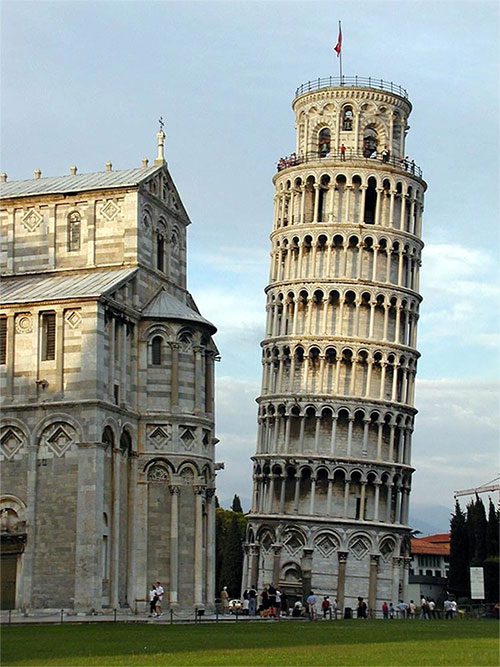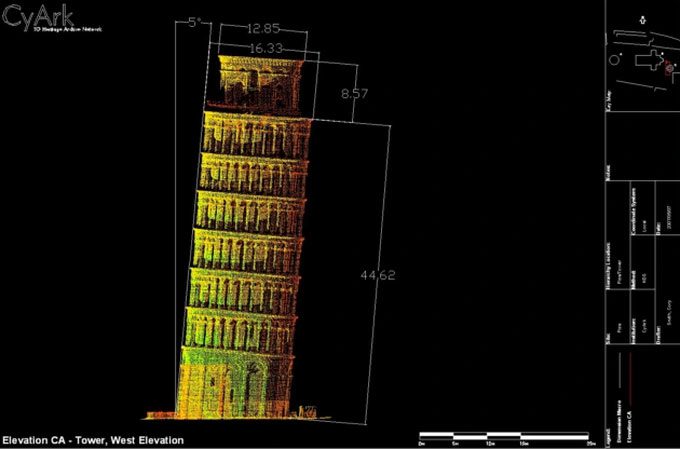The Leaning Tower of Pisa is showing a better-than-expected recovery thanks to the efforts of engineers and scientists.
The famous Leaning Tower of Pisa in Italy was once thought to be in serious decline, facing the risk of collapsing at any moment.

The Leaning Tower of Pisa is recognized as a UNESCO World Heritage site for its uniqueness (Photo: Getty).
However, according to a recent survey by a team of engineers sponsored by the Opera Primaziale Pisana (OPA), the condition of the tower has improved significantly compared to forecasts.
Specifically, the tower is returning to a vertical position and is now 4 cm taller than it was approximately 20 years ago, since maintenance and stabilization efforts were implemented.
“Considering this is an 850-year-old patient, with a tilt of about 5 meters and a subsidence of over 3 meters, the health condition of the Leaning Tower of Pisa is remarkable,” said a spokesperson for OPA.
This is seen as an extraordinary effort by engineers and geoscientists, who have devised solutions to “straighten” the eight-story tower.

To date, it has survived 4 earthquakes and swayed back and forth numerous times. (Photo: Getty).
All efforts seemed to be “going down the drain” in 1990 when the Pisa Tower was no longer on solid ground, leaning 5.5 degrees southward. This exceeded acceptable limits, and engineers thought the tower would collapse.
Shortly thereafter, the tower was closed to the public, and the Italian government invited a team of experts, led by civil engineer Michele Jamiolkowski, to find a way to save the tower.
Initially, the team of experts, along with scientists, considered pumping cement underneath the tower for reinforcement but decided that this method was too risky.
Ultimately, they excavated soil from the northern side of the tower, causing that area to sink and pulling the tower upright.
The project lasted a decade and was completed in 2001. The results indicated that the tower had straightened by about 40 cm, but its tilt remained more than double its original lean when construction finished in 1350.

3D laser scan of the tower. (Photo: CSIRO).
In 2013, researchers from the Commonwealth Scientific and Industrial Research Organisation (CSIRO) of Australia once again got involved. They mapped every nook and cranny of the tower using a 3D scanner, creating several digital replicas of it.
Using various engineering techniques, the research team successfully stabilized the tower and, more importantly, reinforced its structure, making it more stable.
According to a recent report, the Leaning Tower of Pisa now sways very slightly, with an average oscillation of about half a millimeter per year. It is estimated that the tower could remain safe for at least the next 300 years, if not longer.
Some scientists even believe that restoration efforts might succeed to the point where one day it could stabilize itself.
The Leaning Tower of Pisa is the name of a famous tower in the city of Pisa, Italy, which began construction in 1173 and stands nearly 60 meters tall.
The “one-of-a-kind” characteristic of the Leaning Tower of Pisa is that it began to lean due to subsidence even during its construction. To stabilize the tower’s structure, engineers have employed various geotechnical measures to maintain its current state.
For centuries, engineers, scientists, and the public have often held their breath regarding the fate of this iconic bell tower.
To date, it has survived 4 earthquakes and swayed back and forth numerous times. Yet somehow, the tower remains standing with a tilt that is not significantly different from its original state.


















































